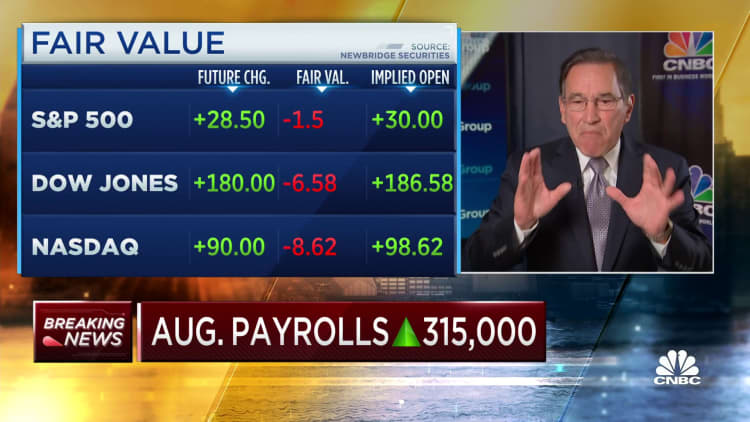Payrolls rose 315,000 in August as companies keep up hiring pace

Nonfarm payrolls rose solidly in August amid an otherwise slowing economy, while the unemployment rate ticked higher as more workers rejoined the labor force, the Bureau of Labor Statistics reported Friday.
The economy added 315,000 jobs for the month, just below the Dow Jones estimate for 318,000. The unemployment rate rose to 3.7%, two-tenths of a percentage point higher than expectations largely due to a rising labor force participation rate. A broader measure of unemployment that includes discouraged workers and those holding part-time jobs for economic reasons rose to 7% from 6.7%.
Wages continued to rise, though slightly less than expectations. Average hourly earnings increased 0.3% for the month and 5.2% from a year ago, both 0.1 percentage point below estimates.
Professional and business services led payroll gains with 68,000, followed by health care with 48,000 and retail with 44,000. Leisure and hospitality, which had been a leading sector in the pandemic-era jobs recovery, rose by just 31,000 for the month after averaging 90,000 in the previous seven months of 2022.
Manufacturing rose 22,000, financial activities gained 17,000 and wholesale trade increased by 15,000.
The employment numbers pose a quandary for a Federal Reserve trying to get inflation under control.
“This is a unique period of time, where we have still a relatively tight labor market, where there is still job growth, but companies have started to announce hiring freezes, some companies have announced layoffs,” said Liz Ann Sonders, chief investment strategist at Charles Schwab. “This could very likely be a recession were you don’t see the kind of carnage in the labor market that you see in most recessions.”
Those payroll and wage gains came amid soaring inflation and concerns over a slowing economy that posted negative GDP numbers in the first two quarters of the year, generally considered a telltale sign of recession.
Inflation is running near its fastest pace in more than 40 years as a combination of a supply-demand imbalance, massive stimulus from the Fed and Congress, and the war in Ukraine has sent the cost of living soaring.
The Fed has been battling the inflation problem with a series of interest rate hikes totaling 2.25 percentage points that are expected to continue into next year. In recent days, leading central bank figures have warned that they have no intention on backing off their policy tightening measures and expect that even when they stop hiking, rates will stay elevated “for some time.”
One key channel the Fed is looking for policy impact is the jobs market. In addition to robust hiring, job openings are outnumbering available workers by a nearly 2-to1 margin, pressuring wages and creating a feedback loop that is sending prices higher for not only gas and groceries but also shelter costs and a variety of other expenses.
This is breaking news. Please check back here for updates.
Read More:Payrolls rose 315,000 in August as companies keep up hiring pace
